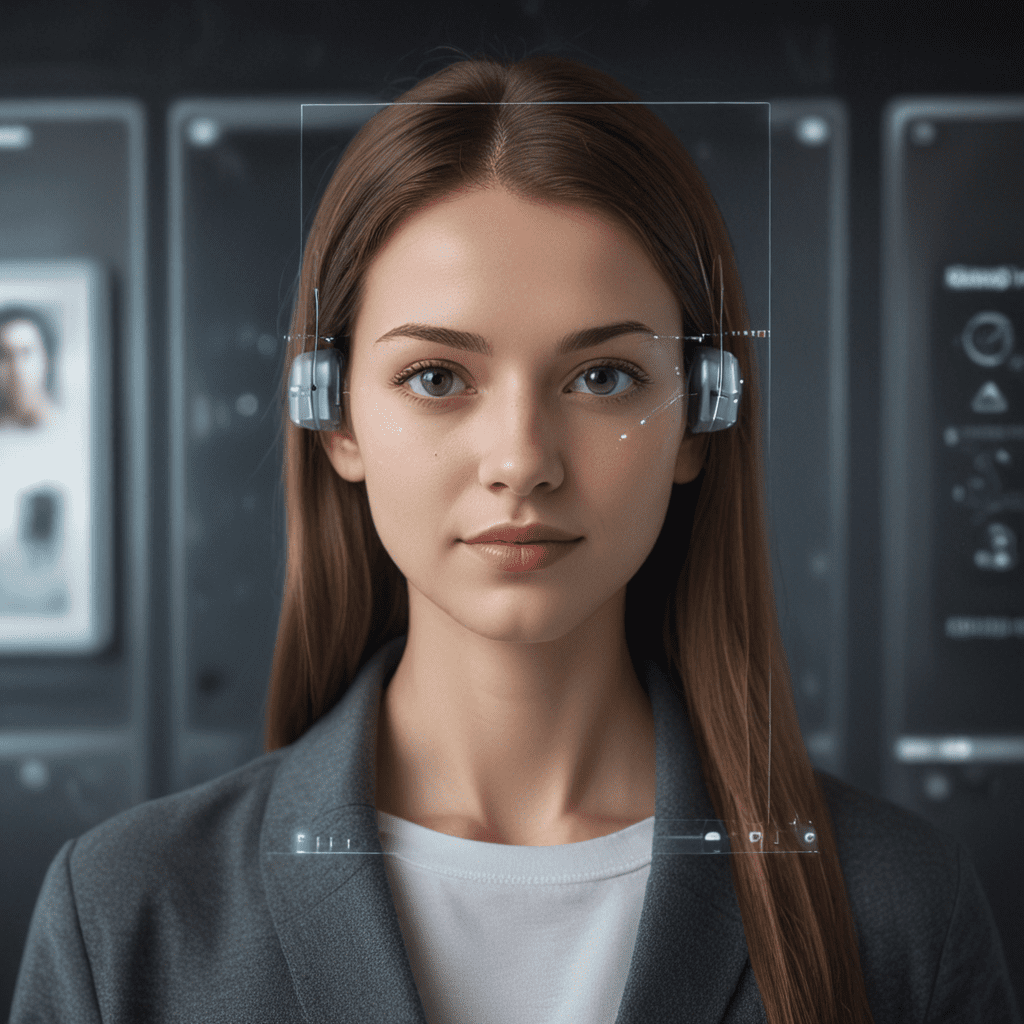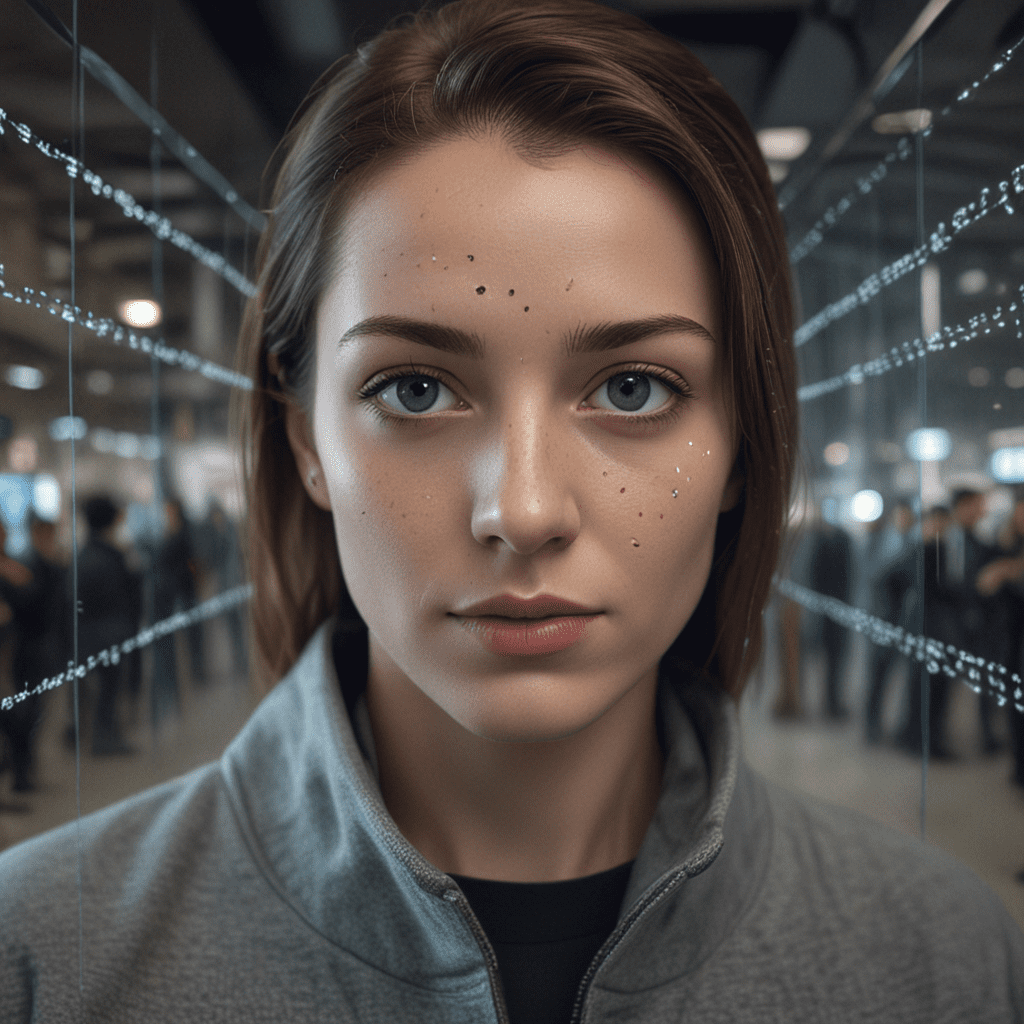
The Potential of Facial Recognition in Augmented Reality Applications
1. Introduction: The Intersection of Facial Recognition and Augmented Reality
Augmented reality (AR) is revolutionizing our interactions with the digital world, superimposing computer-generated images and data onto the real world through smart glasses or similar devices. Facial recognition technology, on the other hand, identifies and analyzes individuals based on their facial characteristics. By merging these two technologies, we unlock a wealth of possibilities in the realm of AR applications.
2. Facial Recognition: Principles and Applications
Facial recognition systems rely on algorithms to extract unique features from an individual's face, creating a digital template or "faceprint." Advanced techniques, such as deep learning, enable accurate recognition even under various lighting conditions and facial expressions. This technology has already gained widespread use in security, surveillance, and social media platforms.
3. Integrating Facial Recognition into AR Devices
Augmented reality devices can integrate facial recognition capabilities into their operating systems. This allows users to engage with AR content based on their identity, preferences, and real-time expressions. For instance, smart glasses can recognize the user's face and automatically display personalized AR overlays with relevant information or entertainment.
4. Personalized User Experiences: Custom AR Content and Interactions
Facial recognition in AR can cater to individual users, delivering customized experiences. By identifying the user's face, the system can adapt AR content to their specific needs, interests, and preferences. This enables immersive and engaging interactions, fostering a sense of ownership and personalization in the AR environment.
5. Immersive Storytelling: Enhancing AR Narratives with Facial Expressions and Emotions
Facial recognition plays a crucial role in enhancing the storytelling capabilities of AR. It allows virtual characters to respond to the user's expressions and emotions, creating a more engaging and immersive experience. By capturing and analyzing the user's facial cues, AR narratives can adapt to their reactions, leading to dynamic and interactive stories that resonate on a deeper level.
6. Real-Time Collaboration: Seamless Communication with Remote Participants
Augmented reality enables virtual collaboration, allowing individuals in different locations to interact with each other in a shared augmented space. Facial recognition technology plays a pivotal role in this scenario. By recognizing the faces of remote participants, AR systems can create virtual avatars that accurately reflect their facial expressions and body language. This facilitates natural and immersive communication, fostering a sense of presence and connection among participants.
7. Healthcare Applications: Remote Diagnostics and Patient Monitoring
Facial recognition has significant implications in the healthcare industry. By integrating this technology into AR devices, healthcare professionals can remotely diagnose patients from anywhere. AR-enabled facial recognition allows doctors to assess facial expressions, skin conditions, and other physiological indicators to identify potential health issues. Additionally, facial recognition can be used to monitor patients' progress over time, providing valuable insights into their health and well-being.
8. Educational Enhancements: Personalized Learning and Interactive Experiences
Augmented reality has the potential to revolutionize education by creating immersive and personalized learning experiences. Facial recognition in AR empowers educators to tailor content to individual students' needs. By identifying students' faces, AR systems can access their learning profiles, adapting the difficulty and delivery of material to their specific learning styles. Furthermore, facial recognition can be used to create interactive AR simulations that allow students to explore complex concepts in a hands-on, engaging manner.
9. Security and Privacy Considerations: Balancing Convenience and Data Protection
While facial recognition offers numerous benefits in AR applications, it also raises important security and privacy concerns. It is crucial to implement robust security measures to protect users' biometric data from unauthorized access or misuse. Additionally, clear privacy policies and regulations must be established to ensure that individuals have control over their facial recognition data and are fully informed about how it is being used.
10. Future Directions: The Evolving Landscape of Facial Recognition in AR
The integration of facial recognition into augmented reality is an ongoing and evolving field of research and development. As technology advances, we can expect to see even more innovative and groundbreaking applications emerge. Facial recognition will continue to empower AR experiences, making them more personalized, immersive, and impactful across various domains.
FAQs
Q: How does facial recognition work in AR applications?
- A: Facial recognition in AR leverages algorithms to analyze facial features and create a digital template. This template is then used to identify individuals based on their unique facial characteristics.
Q: What are the benefits of integrating facial recognition into AR devices?
- A: Facial recognition in AR offers personalized user experiences, enhanced storytelling capabilities, seamless collaboration, healthcare applications, and educational advancements.
Q: What are the security and privacy concerns associated with facial recognition in AR?
A: It is essential to implement strong security measures and establish clear privacy policies to protect users' biometric data from unauthorized access and misuse.
- Q: How will facial recognition evolve in AR applications in the future?
- A: As technology advances, we can expect to see even more innovative and groundbreaking applications of facial recognition in AR, further enhancing user experiences and empowering various domains.


